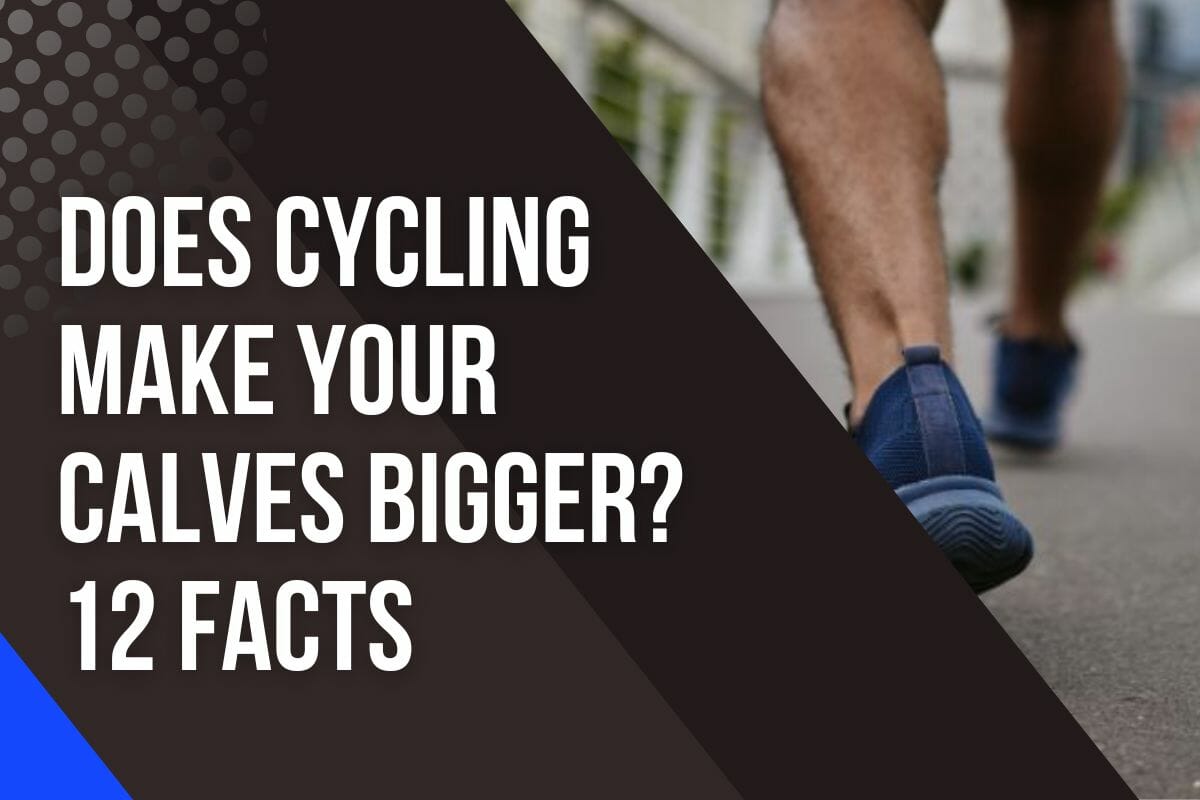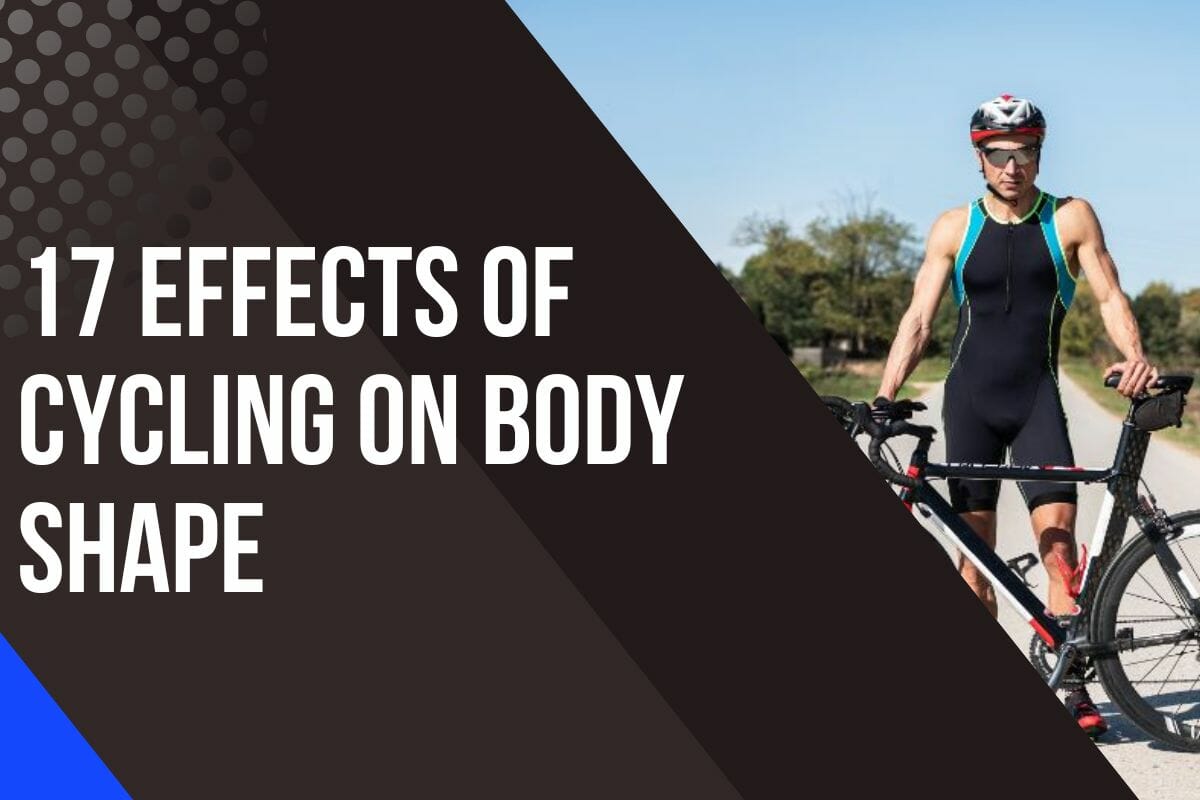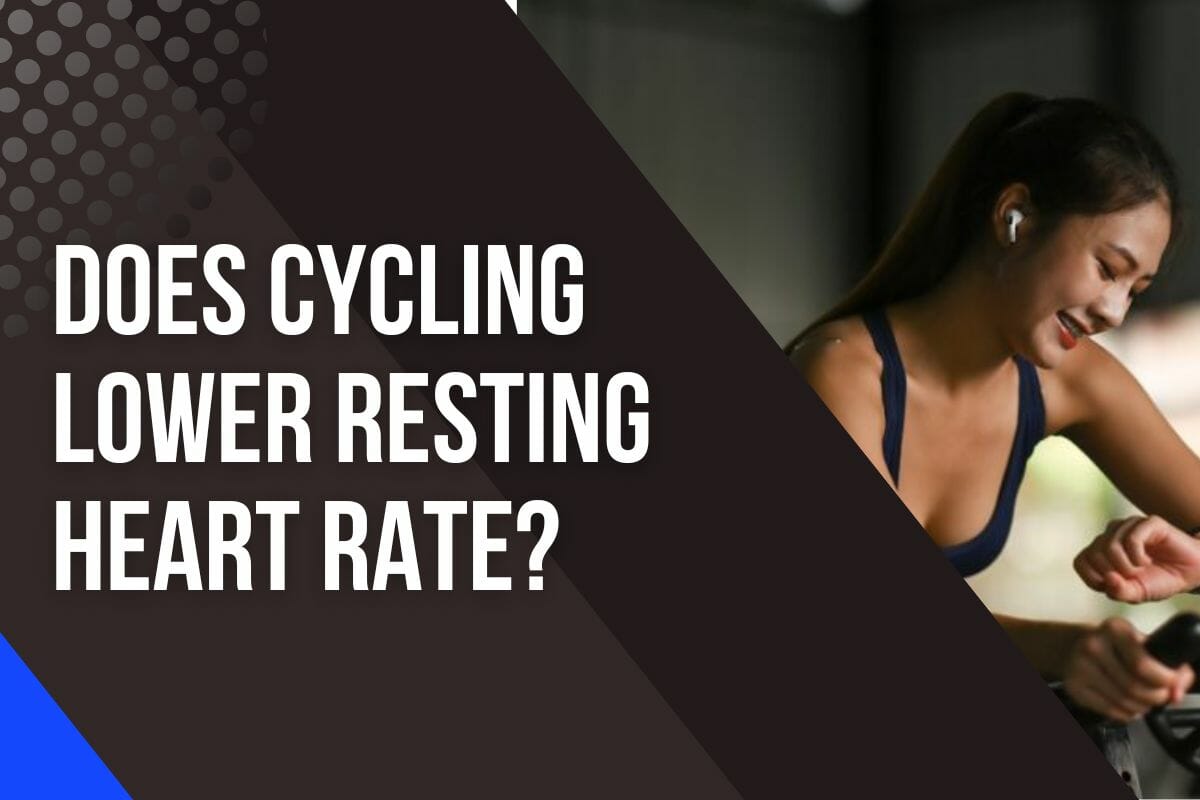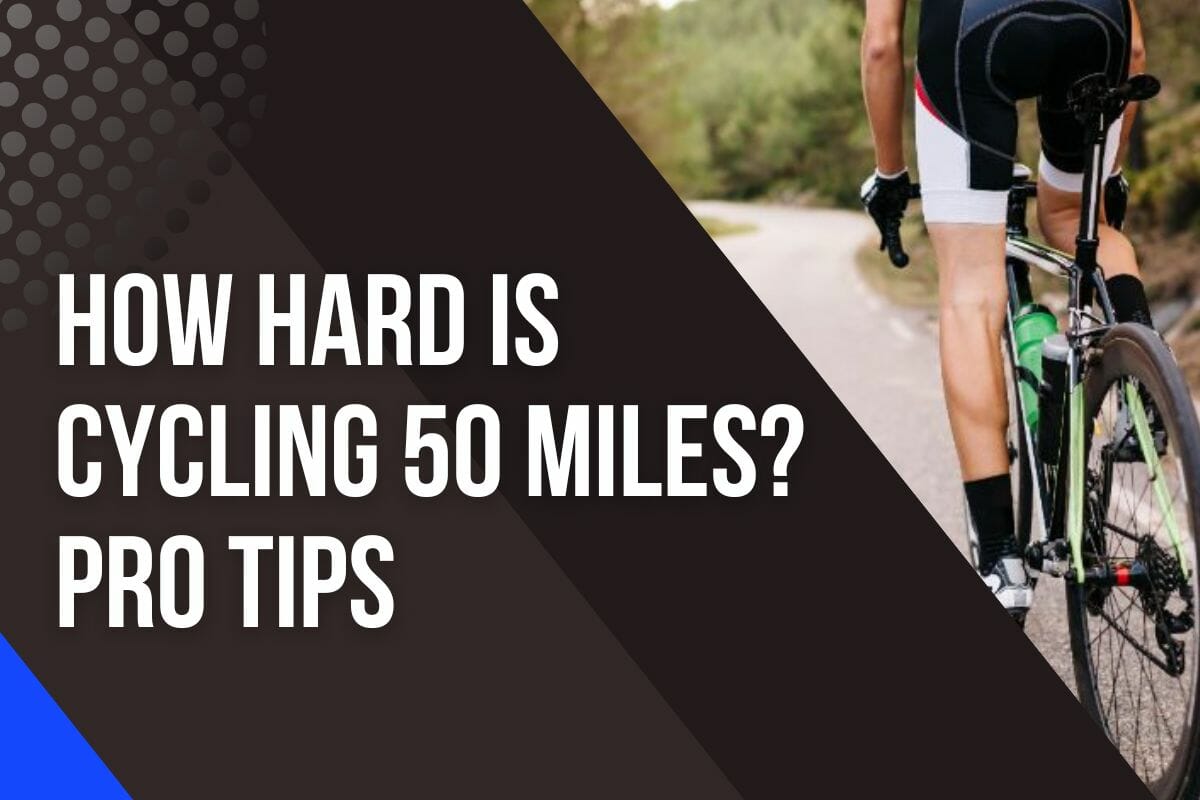Does Cycling Make Your Calves Bigger? 12 Surprising Facts

Are you looking to build bigger calves? You may be surprised to hear that cycling could be your answer.
Cycling is a great way to get toned and build your calf muscles, although the results may not be quite as dramatic as lifting weights.
To really get those calf muscles popping, try interval training and climbing to ramp up your cycling routine. But if you’re looking to really get the most out of your calf muscles, weightlifting training is the way to go. (1)
Climbing onto a bicycle can definitely help you make progress with calf growth. It’s totally achievable as long as you put in the effort.
In this article we’ll discuss 12 facts about calves, how cycling can help make your calves bigger, what role the calves play in cycling, and tips for getting the most out of your ride.
So, hop on your bike, and let’s get started!
How Important Are Your Calves When Pedaling?
As a cyclist, I’ve always been interested in understanding the role of my calves in the pedal stroke.
After all, it’s my calves that are doing huge chunks of the work when I’m pushing down on the pedals.
And sure enough, research has found that your calf muscles are engaged most when you only push on the pedal with your toes.

Your calf muscles provide the necessary force and power output required for cycling performance, as well as stability when you’re pedaling.
They are one of the most important leg muscles used during cycling and help to keep your feet firmly planted on the pedals while also providing an efficient forward motion.
However, pulling through the very top and bottom of the pedal stroke will slightly enhance your power output since it will engage a different set of quads and calve muscles – something that untrained cyclists can’t do as efficiently as expert cyclists can.
This means that if you want to get the most out of your ride, developing stronger calves is essential.
Your calf muscles work to extend each leg with every pedal revolution, giving you greater control over your speed and direction while riding.
They also absorb shock from bumps in the road and allow you to maintain balance while steering around tight turns or obstacles.
By strengthening these muscles, cyclists can increase their power output and overall efficiency throughout a ride.
Stronger calves enable riders to put forth more effort in less time by minimizing fatigue caused by using other muscle groups.
Will Cycling Make Your Calves Bigger?
The short answer is no, although cycling can help to get toned and more defined calves eventually.
Cycling alone won’t give you extra big legs overnight.
However, if you cycle regularly then over time your calves will begin to become stronger and your legs will become more toned as fat is burned in the process.
This doesn’t mean you won’t ever have bigger calves, but it does take more than just regular bike rides for this to happen.
If building bigger calf muscles is what you want, performing targeted exercises focusing on that muscle group is a must.

You should strive for an effective combination of cardio training with targeted weight lifting and high-intensity interval workouts in order to maximize your calf gains while working out safely at the same time.
Supplementing this routine with adequate rest and a well-balanced nutrition plan will help speed up gains to reach desired results even faster.
So, are you ready to increase the size of your calves with cycling? Here are 12 key facts you should know.
1. Cycling Builds And Tones Muscles To A Certain Extent
After years of cycling, I can confidently say that it definitely has toned my calves and also built some muscle.
It’s not something that is immediate or drastic; cycling will slowly help you get stronger and more defined in the calves over time.
As with any exercise, results vary from person to person and depend on body type, diet, intensity level, and other factors.
I personally enjoy riding at a moderate intensity for about an hour each day.
This way I’m able to enjoy the aerobic benefits of cycling while still getting a good workout for my legs.

As well as this, I try to do calf exercises such as weighted calf raises and single-leg calf raises two or three times a week in order to really target the muscles in my lower legs.
Doing this helps me keep track of how much they have improved and keeps them strong even when I’m not riding my bike.
Overall, cycling is a great way to tone your calves and build some muscle if done correctly.
You don’t need to be an Olympic cyclist or ride all day long; just keep your workouts consistent, listen to your body, and focus on achieving maximum heart rate during your rides.
2. Cycling Resembles Resistance Training
Much like weight resistance training, cycling is a great way to build muscle in the calves.
During a pedal stroke, your calf muscles push and lift your body weight against gravity as you move forward.
While this does not provide the same type of heavyweight that professional cyclists use when training for competitions, it does work on building muscle fiber over time.
Depending on the intensity of your cycling, this type of exercise can help build up muscle strength in your calves.

The harder you push yourself while riding, the more likely you are to gain muscle strength in these areas.
If done correctly, cycling exercises can lead to increased muscular strength not only in your calf muscles but also throughout your legs.
In combination with other lower-body workouts such as squats or lunges, cycling provides an additional layer of resistance that helps target specific muscles for growth.
As a result, cyclists may see gains in their calf size over time due to a combination of physical activity and nutrition.
3. Aim For Longer Cycling Duration For Optimum Muscle Building
When you cycle, your muscles contract and relax repeatedly which creates tiny tears in the muscle fibers called micro-tears.
This process of tearing and rebuilding strengthens the muscles that are being worked out. (3)
If the intensity is increased gradually over time these micro-tears will get larger, leading to more effective muscle gain and building.
However, you must be aware that the amount of resistance when cycling may be too low for optimum micro-tearing of the muscles.

While the ideal number of reps for building muscle quickly is between 8 and 12 reps per set, this logic can’t necessarily be easily translated over to cycling where going against higher resistance with fewer repetitions isn’t possible.
Even if you were able to perform only 12 pedal revolutions with high resistance you would either have something wrong with your bike or be trying to go up a steep incline.
Instead, cycling favors more repetitions against lower resistance which overall provide lower muscle micro tears as opposed to lifting weights in the gym.
4. Calves Work Together With Quads And Glutes
Cycling is an effective exercise that can make your calves bigger.
This happens because when you pedal, the calf muscles are recruited to assist in creating torque at the ankle joint.
With each rotation of the pedals, these muscles work together with other muscle groups such as the quadriceps and glutes to generate power. (2)
It’s important to understand how the calf-quad-gluteal combination works during cycling.
When initiating a downstroke, the calves act as stabilizers while also providing support for the quads and glutes as they contract forcefully.

As this force is created through a concentric contraction, it helps propel your legs forward on the bike.
The result is increased muscular tension in all three areas – calves, quads, and glutes – which further adds to overall strength and size gains in those respective muscle groups.
The combined effort between these three muscle groups creates a powerful yet efficient movement that not only builds up your leg muscles but also increases cardiovascular endurance over time.
So, if you’re looking for larger calves or want to improve your performance on a bicycle ride, be sure to engage in exercises that target all three areas – calves, quads, and glutes – simultaneously.
5. Unleashing Calves Power In Cycling
The calves play an important role in cycling, as they are used for half of the pedal rotation.
The calf muscles are activated at the top of the pedal rotation in order to help push the pedal down toward the bottom.
After completing each push, the calf muscles then rest when the movement goes from the bottom of the pedal rotation back up to the top.
As these actions occur very quickly in a cycling motion, it can be said that it is in a continual loop alternating through activation and resting multiple times every minute.

The use of other muscles should also not be forgotten when talking about cycling.
During a ride, the glutes and hamstrings will also fire up in order to maintain stability while riding.
Quads will help move your feet around circles while pedaling and hip flexors enable you to regulate pressure on your legs while pushing them around in circles against the resistance created by socializing roads or trails.
Undoubtedly, all these muscles must work together with one another and mainly with your calves in order to achieve maximum efficiency, comfort, and power on your ride.
6. Cycling Helps Burn Fat And Improves The Look Of Your Calves
I’ve noticed that as I’ve lost excess body fat through cycling, my calves have become more toned and sculpted even though the muscle mass hasn’t increased.
Cycling helps burn calories and is great for weight loss in general. When you combine it with a good-quality dietary plan, you can really see a difference in your body composition.
7. Add Speed Interval Training Into The Mix
When it comes to improving the look of your calves, cycling does have some benefits.
But if you really want to make a big impact, consider incorporating speed interval training into your cycling routine.

Speed intervals are short bursts of intensity that can help condition and build up the muscles in your legs—including those calf muscles!
By performing high-intensity exercises like cycling intervals during your workouts, you will be targeting more muscle fibers than simply going for an easy ride on flat terrain.
This type of training increases both muscular strength and endurance so your body is better able to handle intensive physical activity without tiring quickly.
Plus, with this type of workout, you’ll be burning calories at a much higher rate while still allowing yourself time to recover properly between sets.
So how do you add speed intervals into your regular cycling regimen?

Start off by doing shorter bursts of intense pedaling like sprinting followed by periods of rest or light riding.
As you become comfortable with these types of interval exercises, increase the length and difficulty level until you reach desired results.
Just remember not to push yourself too hard as it’s important to take breaks after each set and drink plenty of water throughout your workout session.
8. Build Calf Muscles With Climbing
Adding some climbs into your routine can be a great way to build some calf muscles.
When you go up hills or mountains on your bike, the muscles in your calf are working hard as they push against the pedals and propel you forward.
This type of exercise helps to strengthen them and make them more powerful.

The best way to do this is by getting out of the saddle, which will normally happen naturally when you are cycling up hills outside.
Alternatively, if you are doing indoor cycling on a stationary bike, then this can easily be replicated by turning up the resistance and getting out of the saddle.
9. Best Cardio For Calves
For most people who want to work out their calves, the best cardio exercises are those that involve going up and down.
Jumping on the spot is a great exercise for developing calf strength. It will help to tone the muscles and develop muscle mass in the calf area of the body, providing a boost to both health and physical appearance.
The most optimal form of cardio workout for calves though may be using a jump rope as skipping even every day is said to quickly strengthen them if done regularly enough.
As you go up and down, progress at your own pace but eventually you’ll feel a burn in your lower legs meaning you’re taking one step closer to having strong calves.
10. Do Calf Strength Exercises To Build Calf Muscle
Besides weight resistance training, some of the best exercises for developing strong calves include calf raises and seated calf raises.
These exercises are all great for working the gastrocnemius muscle—the large muscle in the back of your lower leg—and will help you build strength and power throughout your cycling sessions.
Double Leg Calf Raise
This exercise works both of your calves at the same time and is great for developing strength and power.
To do this exercise, stand with your feet shoulder-width apart and hold onto something for balance if needed.
Then, slowly raise up on the balls of your feet and go as high as you can without straining your legs too much.
Hold this position for a few seconds before slowly lowering back down to the starting point. Repeat this movement for 10-15 repetitions to complete one set.
Single Leg Calf Raise
I recently added single-leg calf raises to my exercise routine and I must admit, they’ve been a game changer.
Although double-leg calf raises are great for building strength and power, single-leg calf raises take it to the next level.
This exercise works each calf muscle individually and is much more intense than the double-leg version.
To do this exercise, stand with one foot on the ground and hold onto something for balance if needed.
Then, slowly raise up on the ball of your foot and go as high as you can without straining your leg too much.
Hold this position for a few seconds before slowly lowering back down to the starting point. Repeat this movement for 10-15 repetitions to complete one set.
Seated Calf Raise
I usually perform this exercise while seated on a bench or chair with a barbell placed across the knees.
Starting with the weight of your choice, raise up onto your toes and hold for a few seconds before slowly lowering back down to the starting point.
It’s important not to bounce or swing your body while performing this movement, as it can lead to injury.
I’ve found that adding seated calf raises has greatly increased my cycling performance by improving strength in my calves and lower legs.
Eccentric Calf Raises
To perform eccentric calf raises, you need to grab a step or any elevated surface to get started.
Press up with both feet, and then slowly lower down onto one. Keep the arch of your foot in a high position, avoiding any collapsing or sinking.
Once you have done 3-5 reps on one foot, switch over to the other. Remember, the slower you go, the harder the exercise.
11. Other Activities To Build Your Cycling Calf Muscles
Cross-training for cycling can be a great way to build your calf muscles and improve your performance on the bike.
Building muscle in the gym is one way to do this, but it shouldn’t be your only approach.
Taking time to cross-train with other activities ensures that you’re working different muscles so as not to overwork the same ones with too much repetition on the bike.
Here are some suggestions for calf-building activities.
Running, Walking, And Hiking
Running, walking, and hiking are great activities for building strength and endurance in your calf muscles.
The resistance of the terrain along with your body weight helps to promote muscle growth.
This is the same principle as hill climbing on a bicycle or biking in higher gears.

Depending on how steep the hills are during running, walking, and hiking any training session can help to build muscle in the calves quickly and significantly.
This type of training offers several different benefits for cyclists.
Firstly, it can help to increase your endurance when compared to riding alone because you get to enjoy different forms of cardio exercise while still working towards powering the bike up inclines.
Also, running, walking, or hiking provides an environment where you don’t have to worry about automobile traffic or other common hazards associated with road cycling.
Running Sports
Running sports are a great way to build strong calf muscles. Whether you’re playing volleyball, basketball, soccer, or tennis, all these activities involve running, jumping and quickly switching between different directions.
This means that your calf muscles are activated every time you jump or sprint, helping to tone them up and make them stronger than ever.

Moreover, running fast can also help enhance the strength of your calves overall.
By pushing into your hip flexors while accelerating and jumping, you can take advantage of the natural power in your lower body to maximize the benefits for your calves.
You will also receive a gain in flexibility if you dedicate yourself consistently to running sports. Start by choosing one sport and practice regularly until you can incorporate others like tennis too.
Spin Class
Spin class is a cardio workout with amazing benefits for your whole body.
It’s designed to allow an intense yet controlled ride on the stationary bike, and you are sure to get the most out of it when you join a spin class with an enthusiastic instructor.
During the high-intensity cycling sessions, the instructor will guide you, motivate you and carefully take you up and down kilometers of simulated hills from the comfort of your home or gym.

He will direct you to increase resistance as it is needed – this added effort makes the calories really burn!
When riding, you are simulating a real-life experience – it will remind you of climbing hills or even literally riding up one which makes it super interactive.
The time spent riding standing on the pedals although demanding, still gives great results in strengthening your calves while slimming down your thighs and toned legs.
12. You Don’t Feel That Sore Or Stiff After Cycling
Cycling helps you avoid feeling sore and stiff after your workouts, unlike weight training.
Here are three reasons why cycling won’t leave your body feeling sore or stiff:
- It strengthens your muscles without overwhelming them. When cycling, your calves are working hard while still being able to maintain proper posture and form.
- It activates fewer tiny muscle tears compared to weight training, which leaves your muscles feeling exhausted and sore afterward.
- It also increases sleep quality and provides an unbeatably effective form of cardio exercise.
Will Having Bigger Calves Make You A Faster Cyclist?
Having powerful calves can be beneficial for many aspects of cycling, not just to increase your speed.
Your calf muscles provide a stable platform through the ankle joint which helps you transfer power from your quads and glutes to the pedals.
However, carrying out daily tasks such as walking means your calves are already quite strong enough for regular cycling – additional exercises won’t make you faster directly, but can help balance the strength in your legs.
You don’t necessarily need huge calf muscles either, as they don’t move very much throughout a pedal stroke.

Building up some strength in your calves is beneficial for cyclists and helps support other muscles if they become overloaded during a ride or race.
Making sure that your calf muscles are strong enough will also prevent issues such as tendinitis from occurring due to overuse.
So having bigger calves might not necessarily make you faster, but it will ensure that you have a well-rounded workout regime that supports all the major muscle groups used when cycling.
The most important thing to remember when trying to build muscle cycling is that you need to focus on strengthening your entire lower body, not just your calves.
That means incorporating exercises such as squats and lunges into your routine in addition to regular biking sessions.
This will help ensure that all of the muscles used for cycling are strong, which can ultimately lead to improved performance on two wheels.
My Verdict
Cycling is an effective way to build calf muscle strength but not necessarily make them extra big like Hulk.
Cycling alone may not be enough to get bigger calves, but incorporating weight resistance exercises and running sports into your routine will help target those muscles more effectively.





